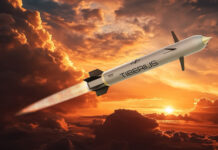The US Army Communications & Electronics Command in Washington awarded Liteye Systems a contract valued up to $22.6 million, for the delivery of monocular displays for the LRAS3 target acquisition system. Deliveries will begin immediately and span over five years. The total quantity to be delivered has not been determined yet but could exceed 4,000 units.


The U.S. Army is fielding the new Monocular Display augmenting the Long-Range Advanced Scout Surveillance System (LRAS3), multi-sensor target acquisition systems that detect, recognize, identify, and geo-locate targets at long distances. The monocular displays selected for the program were developed by Liteye Systems. The display consists of Liteye’s Military Off the Shelf (MOTS) LE-600 miniature display, that can be used in helmet mounted or hand held viewer modes of operation. The handheld system comprises a high-resolution OLED microdisplay, energy efficient electronics and optics, all packaged in a compact form factor, built to meet military-standard.
The LRAS3 is deployed with scout platoons at infantry and armor the battalions, providing the scouts autonomous, long range, line-of-sight reconnaissance and surveillance capability. The system automatically determines Far Target Location (FTL) coordinates for any target ranged to by the operator. The system is currently mounted on US High-Mobility Multi-purpose Wheeled Vehicles (HMMWV) and the Stryker Armored vehicles, M707 Knight, and M1200 Armored Knight Support Vehicle. The system can also be dismounted, using a tripod and battery pack.

The Army evaluated different alternatives for the display, and determined that the a small monocular viewer is preferred, because of its small package and flexibility while maintaining high performance required to accurately display the LRAS3 video. The new display will greatly reduce the weight of the dismounted package, enabling systems operators to maintain good orientation and situational awareness, while operating the system on or off the vehicle.
Related links:
















